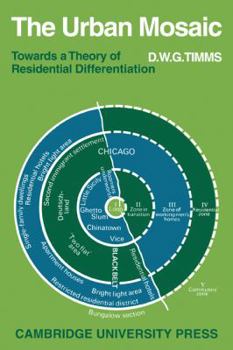The Urban Mosaic: Towards a Theory of Residential Differentiation
(Part of the Cambridge Geographical Studies Series)
Select Format
Select Condition 
Book Overview
The concept of the city as a mosaic of social worlds has achieved wide currency: the residential differentiation of the urban population provides the matrix for much human activity. In this detailed study, the author demonstrates that much of the manifold variation in the social characteristics of populations living in different parts of the city may be summarized in terms of a small number of factors relating to social rank, style of life preferences and ethnicity. Residential and social differentiation are seen as intimately connected. At the individual level, it is suggested that questions relating to social rank, style of life, and ethnicity provide the main framework for the choice of residential location. At the societal level, it is suggested that the variations in the inter-relationship of the basic differentiating factors are a function of modernization. Empirical material is drawn from an number of Australian cities.
Format:Paperback
Language:English
ISBN:0521099889
ISBN13:9780521099882
Release Date:August 1975
Publisher:Cambridge University Press
Length:286 Pages
Weight:0.93 lbs.
Dimensions:0.6" x 6.0" x 9.0"
Customer Reviews
1 rating
just a few variables ?
Published by Thriftbooks.com User , 17 years ago
Timms postulates that we can understand urban demographics and their spatial distribution by a few variables. Social rank (ie. class). Lifestyle preferences. And ethnicity. He does not claim that these explain every detail of distribution. But that they in total can account for an overall qualitative understanding. For data, he looks at Brisbane and Auckland in the 1960s [when this book was written]. Plus also Melbourne, Chicago and various other places. In recent years, this thesis appears to have been taken up again by some; with the addition of technology driven changes.






